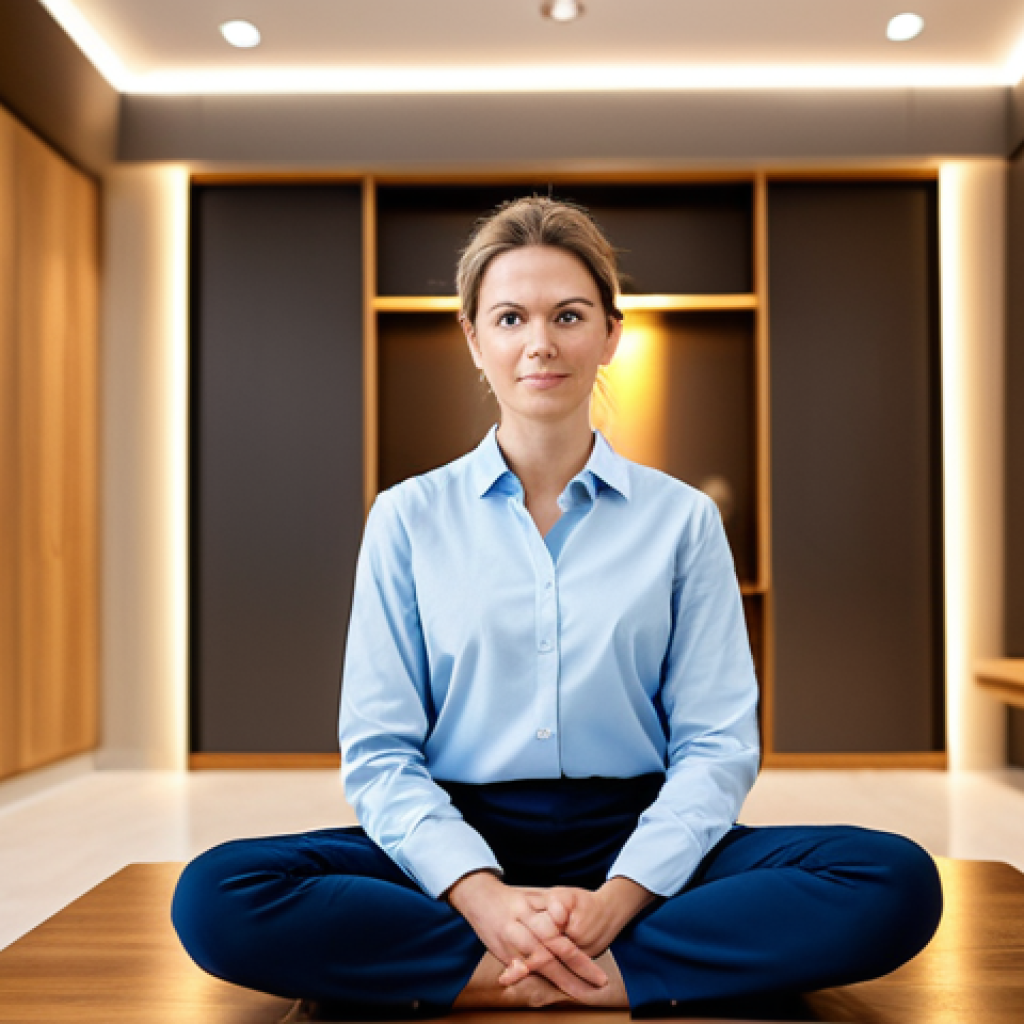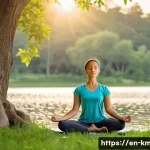Stepping into my first clinic as a newly minted practitioner of holistic health felt like walking onto a stage where I’d been rehearsing my whole life.
After years immersed in textbooks and clinical rotations, the air crackled with a mix of anticipation and a thrilling, almost daunting sense of responsibility.
I remember the subtle scent of herbs, the quiet hum of the waiting room, and thinking, ‘This is it – the real beginning.’ It wasn’t just about applying techniques, but about truly connecting with individuals seeking balance and healing.
This transition from theory to practice revealed the profound human element of healthcare, far beyond what any textbook could convey. I quickly learned that while the principles of personalized care and preventative health had been central to my studies, their true application lay in understanding each patient’s unique narrative – their daily struggles, their hopes, their entire lifestyle.
This deep dive into individual needs felt incredibly rewarding, confirming my belief that the future of wellness truly lies in integrative approaches that address the whole person, mind, body, and spirit.
As we navigate an increasingly digital world, the challenge and opportunity lie in maintaining this vital human touch while embracing technologies that enhance our ability to deliver compassionate, effective care.
Let’s explore this journey further and discover how these early experiences shaped my understanding of true healing.
The Unseen Curriculum: Beyond Textbooks to Real-World Impact

What truly struck me in those early days, far beyond the pristine theories I’d diligently absorbed, was the sheer, messy, beautiful complexity of human experience.
Textbooks are invaluable, don’t get me wrong; they lay down the essential scaffolding of knowledge, providing frameworks and methodologies. But they can never truly prepare you for the raw, unfiltered narratives that walk into your clinic every single day.
I remember one patient, a high-flying executive, presenting with classic stress-related symptoms, yet beneath the surface was a profound sense of isolation that no diagnostic criteria could capture.
It was in listening, truly listening, to her life story – her ambitions, her heartbreaks, her daily routines – that the real path to healing began to emerge.
This wasn’t about applying a pre-set protocol; it was about co-creating a unique journey tailored to her specific emotional landscape and physiological responses.
The most profound lessons, I discovered, were etched not in pages, but in the vulnerable, trust-filled interactions with real people, each carrying their own intricate tapestry of health challenges and aspirations.
It’s this living, breathing curriculum that truly shapes a holistic practitioner, demanding intuition, empathy, and an adaptive mindset far beyond rote memorization.
The journey from intellectual understanding to embodied wisdom is where the magic truly happens, revealing insights that no amount of academic study alone could ever provide.
1. The Symphony of Symptoms: Decoding Individual Narratives
Every single person who steps through the door brings with them a unique symphony of symptoms, each note played against the backdrop of their life. It’s never just a headache; it’s a headache that throbs specifically when they’re grappling with deadlines, or a digestive issue that flares up after contentious family dinners.
I quickly learned that these aren’t isolated incidents but crucial clues to a much larger, interconnected system at play. My role transformed from merely identifying ailments to becoming a detective of lived experience, piecing together the subtle patterns and triggers that define an individual’s health landscape.
This required an almost forensic attention to detail, delving into sleep patterns, dietary habits, emotional states, and even their relationships, because I truly believe that everything, absolutely everything, is connected.
It felt like uncovering a hidden language, where discomfort wasn’t just a signal of breakdown, but often a deeply personal message from the body about imbalances that needed to be acknowledged and addressed holistically.
2. From Theory to Touch: The Embodiment of Knowledge
There’s a monumental difference between knowing the theory of acupuncture meridians or the biochemistry of herbal remedies and actually feeling the subtle pulse variations under your fingertips or observing a patient’s energy shift after a therapeutic session.
This leap from abstract concept to tangible experience is where true mastery begins. I vividly recall my initial attempts at pulse diagnosis, meticulously comparing what I felt to textbook descriptions, often with a nagging uncertainty.
But with each patient, each unique pulse, a deeper understanding began to form, not just intellectual, but visceral. It was about developing a nuanced sensitivity, where my hands became extensions of my empathetic intention, translating theoretical knowledge into a healing touch.
This embodiment of knowledge, where intuition intertwines with learned principles, transforms practice from a mechanical application of techniques into an intuitive art form, deeply responsive to the individual in front of you.
The Art of Deep Listening: Unlocking Patient Narratives
I’ve come to realize that some of the most profound healing doesn’t begin with a prescription or a specific technique, but with the simple, yet incredibly powerful, act of deep listening.
It’s not just about hearing the words spoken, but tuning into the unspoken anxieties, the subtle shifts in tone, the hesitations, and the long pauses that often hold the most crucial information.
I remember a woman who came in complaining of chronic fatigue, having seen countless specialists without relief. As she spoke, she kept returning to themes of feeling overwhelmed by her caregiving responsibilities, almost as an aside.
By gently guiding her to explore these ‘asides,’ we uncovered a deep-seated emotional exhaustion that was manifesting physically. It was a clear demonstration that people often present the surface problem, but the true root lies deeper, buried beneath layers of societal expectations, personal struggles, and unaddressed emotional burdens.
Creating a safe, non-judgmental space where patients feel truly heard, where they can unburden themselves without fear of judgment, is paramount. This deep attentiveness allows their authentic narrative to unfold, revealing not just symptoms, but the intricate web of circumstances contributing to their health challenges.
It’s about building a bridge of trust, brick by empathetic brick, where healing can finally traverse.
1. Beyond Symptoms: Reading Between the Lines of Life
To truly understand a patient, you must learn to read beyond the presented symptoms and delve into the context of their daily lives. A recurring headache might point to a migraine, but in a holistic view, it also begs questions about stress levels, screen time, hydration, sleep quality, and even relationships.
I often ask patients to describe a typical day, from the moment they wake up to when they fall asleep. This isn’t idle chatter; it’s gathering vital data points about their environment, stressors, coping mechanisms, and overall lifestyle patterns.
One time, a young professional sought help for insomnia. During our conversation, it became apparent that his “unwinding” ritual involved intense video gaming right before bed.
While not a direct cause, it was a significant contributing factor to his overstimulated nervous system. These subtle cues, often dismissed in conventional settings, are goldmines for holistic practitioners, guiding us toward comprehensive and sustainable solutions.
2. The Therapeutic Power of Being Heard
There’s an undeniable therapeutic power in simply being heard, truly heard, often for the first time. Many patients have been through a revolving door of appointments where their concerns are segmented and categorized, but never synthesized into a complete picture.
The moment they realize you’re not just listening for keywords, but for the essence of their experience, a profound shift occurs. I’ve witnessed tears of relief, sighs of release, and moments of sudden clarity just from allowing someone the space to articulate their struggles fully.
This isn’t just about collecting information; it’s an intrinsic part of the healing process itself. When people feel seen and understood, a vital emotional burden lifts, creating fertile ground for physical and mental restoration.
It’s a foundational stone of trust upon which all subsequent interventions are built, making the therapeutic relationship itself a powerful healing modality.
Bridging Ancient Wisdom and Modern Science: An Integrated Approach
My journey reinforced a profound conviction: the future of wellness isn’t about choosing between ancient healing traditions and cutting-edge scientific advancements, but about skillfully weaving them together.
I’ve personally witnessed the synergistic power of combining, say, the millennia-old principles of Traditional Chinese Medicine with contemporary nutritional science or the latest understanding of the gut microbiome.
It’s about respecting the deep well of knowledge accumulated over centuries, recognizing its profound insights into the body’s energetic systems and natural rhythms, while simultaneously embracing evidence-based research that validates and refines our understanding of physiological processes.
This integrated approach isn’t about blind adherence to one paradigm or the other, but about discerning what serves the patient best, drawing from the richest possible pool of healing modalities.
For instance, I might use acupuncture to rebalance energy flows in a patient struggling with anxiety, while simultaneously recommending targeted supplements or lifestyle changes based on modern functional medicine principles.
This holistic synthesis, in my experience, leads to more robust, lasting outcomes because it addresses the whole person from multiple, complementary angles.
1. Beyond Modalities: A Spectrum of Healing Tools
Embracing an integrated approach means seeing a spectrum of healing tools, rather than isolated modalities. It’s like having a well-stocked toolbox for every possible scenario.
I remember working with a patient dealing with chronic pain. While acupuncture provided significant immediate relief by calming their nervous system and reducing inflammation, it was the integration of specific exercises recommended by a physical therapist, coupled with dietary adjustments based on modern inflammatory markers, that truly led to long-term pain management and improved quality of life.
The beauty of this approach is its flexibility and adaptability; it allows for a highly personalized strategy, where the best elements from various disciplines are chosen and combined specifically for an individual’s unique needs and constitution.
This isn’t about a one-size-fits-all formula, but a bespoke journey where various forms of wisdom coalesce into a powerful healing force.
2. Evidence-Informed Practice: The Best of Both Worlds
In a world increasingly driven by data, integrating ancient practices with modern scientific understanding provides the strongest foundation for effective care.
This isn’t about dismissing traditional wisdom, but about understanding its mechanisms through a contemporary lens and validating its efficacy with rigorous research.
When I explain to a patient that certain herbal formulations, used for centuries, are now understood to contain compounds that modulate specific inflammatory pathways or support detoxification, it builds immense trust.
It’s about being able to speak both languages – the poetic language of energy and balance, and the precise language of biochemistry and physiology. This dual understanding allows us to honor the profound historical efficacy of traditional methods while providing a rationale that resonates with modern sensibilities, ultimately empowering patients to make informed decisions about their health journey.
| Aspect of Care | Traditional Wisdom Approach | Modern Scientific Integration |
|---|---|---|
| Diagnosis | Pulse & Tongue Analysis, Pattern Differentiation | Blood Tests, Imaging, Functional Diagnostics |
| Treatment | Acupuncture, Herbal Medicine, Cupping, Moxibustion | Nutritional Therapy, Targeted Supplementation, Lifestyle Coaching |
| Philosophy | Holistic Balance, Qi Flow, Mind-Body Unity | Evidence-Based Practice, Biomarkers, Systems Biology |
| Patient Focus | Individualized Constitution & Energetic Harmony | Personalized Medicine, Genetic Predispositions |
Cultivating Resilience: Empowering Patients for Lasting Wellness
One of the most rewarding aspects of my work isn’t just alleviating symptoms, but truly empowering patients to become active participants in their own healing journey, ultimately cultivating a deep sense of resilience.
It’s about shifting the paradigm from being a passive recipient of care to an informed, proactive agent of change. I’ve seen countless individuals come in feeling helpless against their chronic conditions, believing their health was entirely out of their control.
My role then becomes less about ‘fixing’ them and more about providing them with the knowledge, tools, and confidence to navigate their own well-being.
This might involve teaching simple mindfulness techniques to manage stress, guiding them through dietary changes that reduce inflammation, or helping them establish consistent sleep hygiene practices.
The moment you see the light bulb go off, when a patient realizes they possess the innate capacity to influence their own health outcomes, is truly transformative.
It moves beyond merely treating a disease to fostering a lifestyle that supports vibrant, sustainable wellness, where setbacks become opportunities for growth rather than points of defeat.
1. The Power of Knowledge: From Information to Empowerment
Information alone isn’t power; it’s the understanding and application of that information that truly empowers. I make it a point to educate my patients, not just instruct them.
For example, instead of just telling someone to avoid certain foods, I explain the inflammatory cascade those foods might trigger in their specific body.
Instead of just suggesting a breathing exercise, I might briefly explain how it impacts the vagus nerve and shifts them from a sympathetic to a parasympathetic state.
This deep dive into the “why” fosters a sense of agency and deeper commitment. When patients understand the physiological and energetic mechanisms behind their health challenges and the rationale behind their treatment plan, they become more invested, more consistent, and ultimately, more successful in achieving their health goals.
It’s about turning complex concepts into digestible, actionable insights that resonate with their lived experience.
2. Micro-Habits, Macro Impact: Building Sustainable Change
Lasting change rarely comes from grand, sweeping gestures; it emerges from the consistent, almost imperceptible accumulation of micro-habits. I often guide patients to identify one or two small, manageable shifts they can realistically integrate into their daily routines.
Perhaps it’s adding a five-minute morning stretch, drinking an extra glass of water, or simply pausing to take three deep breaths before a meal. These seemingly insignificant actions, when repeated daily, compound over time to create a monumental impact on overall health and well-being.
I saw this firsthand with a patient who started with just a five-minute walk each evening, gradually increasing it until they were comfortably walking several miles a day, which profoundly improved their mood and sleep.
It’s about making wellness accessible and achievable, breaking down overwhelming goals into bite-sized, non-intimidating steps that build confidence and momentum.
Navigating the Digital Frontier: Tech-Enhanced Human Connection
In today’s rapidly evolving digital landscape, the challenge for holistic health practitioners is to leverage technology not as a replacement for human connection, but as a powerful enhancer.
I’ve personally experimented with various platforms, from secure telemedicine portals for follow-ups to health tracking apps that provide valuable insights into patient adherence and progress.
The goal isn’t to mechanize care, but to extend our reach, improve efficiency, and provide continuous support beyond the clinic walls. Imagine a patient tracking their sleep patterns, heart rate variability, or even mood fluctuations through a wearable device, and then bringing that data to our sessions.
This quantitative information, combined with their qualitative narrative, paints a far more comprehensive picture than either could alone. The art lies in maintaining that essential human touch – the empathy, the intuition, the personalized understanding – even as we embrace digital tools.
It’s about using technology to facilitate deeper insights and more consistent engagement, ensuring that convenience never overshadows genuine connection.
1. Telehealth & Remote Monitoring: Expanding the Reach of Care
The advent of telehealth has been nothing short of revolutionary, especially for patients in remote areas or those with mobility challenges. I’ve conducted numerous video consultations, and while they can’t fully replicate the tactile aspects of an in-person visit, they’ve proven incredibly effective for follow-ups, lifestyle coaching, and even initial assessments where palpation isn’t the primary focus.
Furthermore, remote monitoring tools, from smart scales to continuous glucose monitors, provide invaluable, real-time data that can inform treatment adjustments and offer a more dynamic understanding of a patient’s health trajectory.
This seamless integration of technology allows me to provide consistent, proactive support, ensuring that health advice is not just given during an appointment but can be adapted and reinforced in their daily lives.
2. Data-Driven Insights: Personalizing Wellness Strategies
The sheer volume of health data now accessible through various apps and wearables presents an unprecedented opportunity to personalize wellness strategies with incredible precision.
I’ve found immense value in reviewing aggregated data with patients, helping them identify patterns they might have otherwise missed. For instance, correlating a dip in energy levels with consistently poor sleep quality or high stress markers can be incredibly illuminating for a patient.
This data-driven approach moves beyond generic advice, allowing us to tailor recommendations – whether it’s adjusting their meditation practice, fine-tuning their diet, or recommending specific supplements – with a level of accuracy that was previously unimaginable.
It transforms abstract concepts of well-being into concrete, measurable goals, empowering patients with actionable insights derived directly from their own bodies and habits.
The Ripple Effect of Holistic Care: Transforming Lives, One Patient at a Time
The most profound realization from my years as a holistic health practitioner is that true healing rarely stops with the individual; it creates a beautiful ripple effect that extends outwards, touching families, communities, and even workplaces.
I’ve seen this happen countless times. When a parent struggling with anxiety finds balance, their newfound calm often permeates the entire household, fostering a more peaceful environment for their children.
When an executive overcomes chronic fatigue, their renewed vitality spills over into their professional life, enhancing their leadership and productivity.
It’s not just about addressing physical symptoms; it’s about restoring a sense of wholeness, of vibrancy, that allows individuals to show up more fully in all aspects of their lives.
This outward flow of well-being is incredibly inspiring, confirming my belief that investing in individual holistic health is, in essence, investing in the collective health of society.
Every single person who finds their path to wellness becomes a beacon, influencing those around them through their newfound energy, clarity, and emotional resilience.
This deep understanding has truly shaped my purpose, driving me to foster enduring change.
1. Empowering Families: Health as a Shared Journey
Health is rarely an isolated endeavor; it’s often a shared journey within families. When one member embarks on a path of holistic wellness, their changes frequently inspire and positively influence others in the household.
I’ve observed parents adopting healthier eating habits after seeing their child thrive on a new dietary plan, or spouses joining their partners in mindfulness practices after witnessing their improved stress resilience.
This collective shift can transform the entire family dynamic, creating a supportive environment where healthy choices become the norm rather than the exception.
It’s incredibly heartwarming to see families engaging in activities like preparing nourishing meals together, going for walks, or practicing relaxation techniques, all stemming from one person’s commitment to their own well-being.
2. Community & Beyond: Spreading Well-being
The positive impact of holistic health extends far beyond the immediate family unit, often radiating into broader communities and professional spheres.
A person who feels well, who is energetic and emotionally balanced, contributes more meaningfully to their work, engages more actively in local initiatives, and becomes a positive force in their social circles.
I’ve received heartfelt messages from patients expressing how their improved health allowed them to pursue long-dormant passions, volunteer more, or even inspire colleagues to adopt healthier routines.
This exponential spread of well-being is a testament to the interconnectedness of human health and societal vitality. Each individual healing journey adds a thread to the fabric of a healthier, more resilient community, demonstrating that personal transformation truly has collective resonance.
Closing Thoughts
Stepping back from the daily rhythm of consultations, I’m continually reminded that the truest measure of healing lies beyond the disappearance of symptoms. It’s in the quiet confidence that blooms within a patient, the renewed sense of purpose, and the vibrant engagement with life that follows. My journey, deeply rooted in these real-world interactions, has taught me that holistic health isn’t a destination but a dynamic, ever-evolving process—a beautiful dance between practitioner and patient, ancient wisdom and modern insight, intuition and evidence. It’s a privilege to walk alongside individuals as they rediscover their innate capacity for well-being, fostering a healthier, more connected world, one profound transformation at a time.
Helpful Information
1. Finding Your Holistic Practitioner: Seek out practitioners who emphasize a patient-centered approach and clearly explain their methodologies. Look for certifications and professional affiliations relevant to their field (e.g., licensed acupuncturists, registered dietitians specializing in functional medicine).
2. Initial Consultations are Key: Many holistic practitioners offer introductory calls or brief consultations. Use this opportunity to ask about their philosophy, how they integrate different modalities, and if their approach aligns with your health goals and personal values.
3. Embrace Self-Observation: Begin a personal health journal or use a tracking app to log your symptoms, dietary intake, sleep patterns, and mood. This personal data can be incredibly valuable for both you and your practitioner in identifying patterns and triggers.
4. Start Small, Be Consistent: Sustainable health changes often begin with micro-habits. Instead of overwhelming yourself with drastic overhauls, focus on incorporating one or two small, consistent healthy practices into your daily routine. The cumulative effect is powerful.
5. Understand the Mind-Body Connection: Recognize that stress, emotional well-being, and mental states profoundly impact physical health. Explore practices like mindfulness, meditation, or spending time in nature as complementary tools for overall wellness.
Key Takeaways
The journey to holistic wellness is profoundly personal, emphasizing deep listening, individualized care, and integrating ancient wisdom with modern science. Empowering patients with knowledge and micro-habits cultivates lasting resilience, extending well-being beyond the individual to families and communities. Technology can enhance care, but genuine human connection remains paramount.
Frequently Asked Questions (FAQ) 📖
Q: What was the most significant eye-opener for you when you first stepped into practice after years of study?
A: Oh, the biggest eye-opener, hands down, was realizing just how much more there was to healing than what any textbook could ever convey. I mean, we studied personalized care, preventative health, all the theoretical models.
But the moment a real person, not a case study, sat across from me and started sharing their life—not just their symptoms, but their daily grind, their quiet anxieties, their hopes for feeling better so they could chase their grandkids—it was a bit of a jolt, in the best way.
It truly hit me then that the human element wasn’t just a chapter; it was the entire book. You can chart a thousand pathways on paper, but only by truly listening, by feeling the weight of someone’s story, can you actually begin to navigate their unique path to wellness.
It made me realize that my most powerful tool wasn’t a technique I’d mastered, but simply the ability to deeply connect and understand.
Q: You mentioned that the future of wellness lies in integrative approaches. Can you elaborate on what that means in your day-to-day practice?
A: For me, an integrative approach isn’t just a buzzword; it’s the heartbeat of everything I do. It means genuinely looking at the whole person – not just a single ailment or a symptom.
I remember one gentleman, Mr. Davies, who came in complaining of chronic fatigue. On paper, there were a dozen potential pathways.
But as we talked, it became clear his “fatigue” was deeply intertwined with long hours at a demanding job, poor sleep due to financial worries, and a sense of disconnect from his community after his kids moved away.
If I’d just focused on prescribing an energy booster or a specific diet, I’d have missed the whole picture. Instead, we worked on gentle stress management techniques, connecting him with a local walking group, and even discussed ways to improve his sleep environment.
It’s about weaving together mind, body, and spirit – recognizing that often, the root of physical discomfort isn’t purely physical, and true healing requires addressing all those interconnected threads.
It’s messy, it’s not always linear, but it’s profoundly effective and incredibly rewarding.
Q: In an increasingly digital world, how do you manage to maintain that crucial ‘human touch’ while also embracing technology in your practice?
A: That’s the million-dollar question, isn’t it? It’s a delicate dance, for sure. I find technology incredibly useful for streamlining the mundane – things like appointment scheduling, sending out educational resources, or even secure messaging for quick follow-ups.
That frees up more time during our actual in-person sessions to really be present. For example, instead of spending precious minutes on intake forms, patients can complete them online beforehand.
This means when they walk through my door, we can dive straight into their concerns, face-to-face, without the barrier of paperwork. I’m also a big believer in using it for connection, not just convenience.
Perhaps sharing a curated list of mindfulness apps that genuinely resonate, or recommending a trustworthy online support group. The key, I’ve found, is to use technology as a supportive backbone, a tool that enhances human interaction by making it more efficient and accessible, rather than replacing the irreplaceable empathy and genuine presence that only a human can offer.
It’s about leveraging the digital to amplify the personal.
📚 References
Wikipedia Encyclopedia
구글 검색 결과
구글 검색 결과
구글 검색 결과
구글 검색 결과
구글 검색 결과






